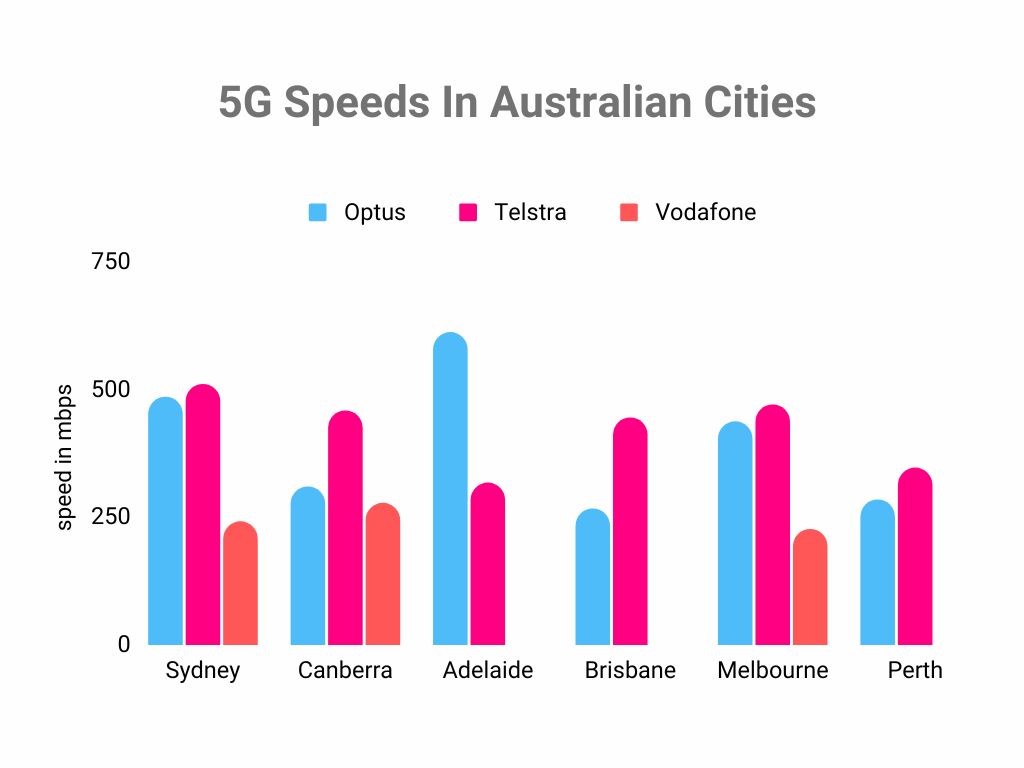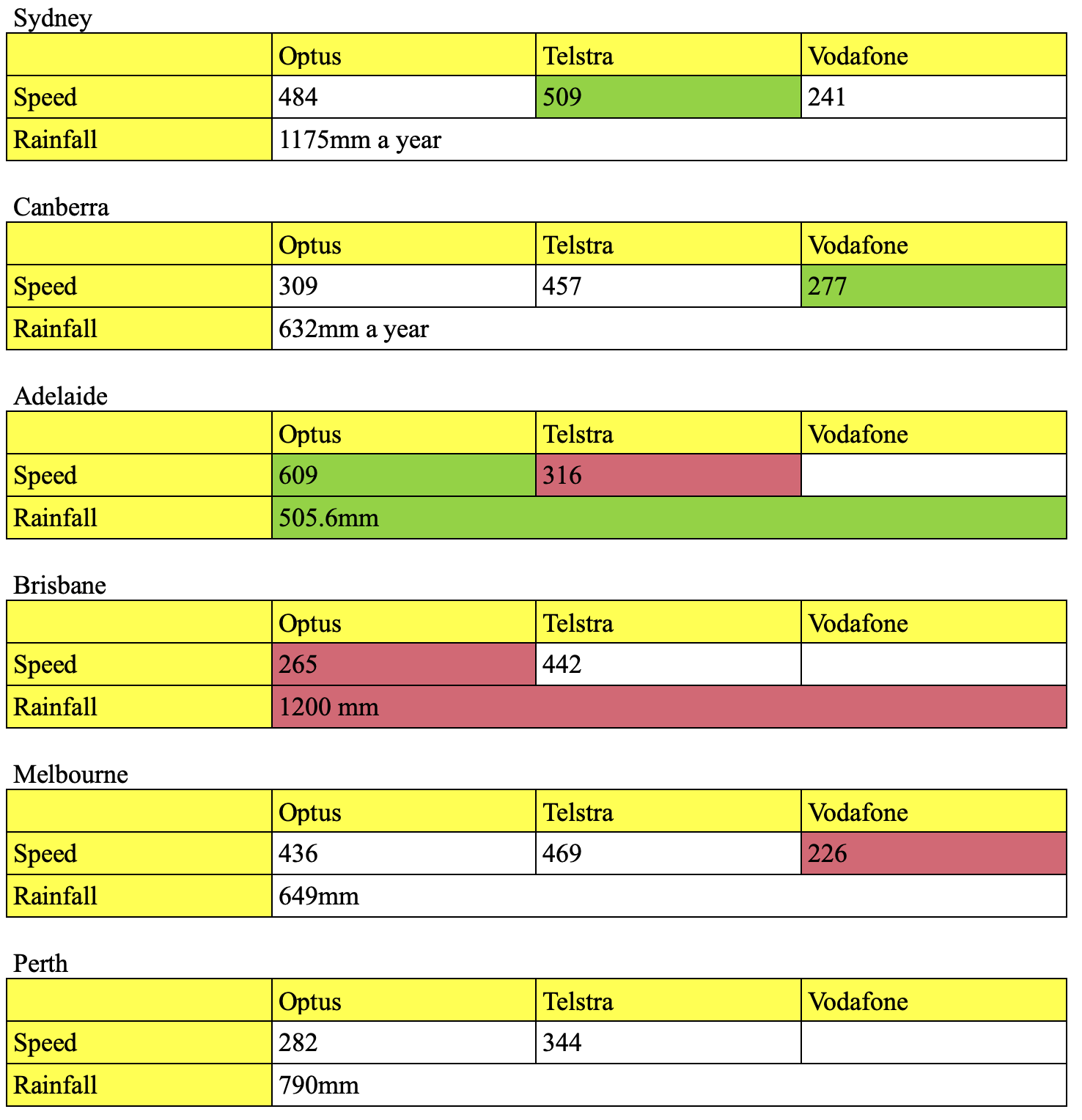How strong your 5G coverage is depends on various factors. Some are within your control; those inside will get better service than those outside. Nature can control other factors; lots of rain can impact a signal’s strength. But another key player in the signal strength of your 5G is its provider. This article will look at the big three telcos to determine which major city has the best 5G coverage.
This article will measure signal strength in megabits per second (Mbps). A bit is the smallest unit of data that a computer can process. So MBPS refers to how many million bits of data are transferred per second.

Sydney
If you’re on Telstra, Sydney is the best place to live, as they have an average speed of 509 Mbps. Those on Optus or Vodafone can expect similar rates to elsewhere in the country, at 484 and 241 Mbps, respectively.
As for rainfall, it’s pretty average for Australia at 1175mm per year.
Canberra
Those on Vodafone are luckiest in Canberra; at 277 Mbps, Vodafone’s 5G speed is faster in the bush capital than in any other city in Australia.
Those on Optus can expect an average of 309 and Telstra 457.
Canberra also has the second lowest rainfall, at around 632mm per year.
Adelaide
How fast your 5G is in Adelaide depends on your network. Optus has its fastest 5G here, at 609 Mbps. However, Telstra has its slowest at 316. Unfortunately, I was unable to find information about Vodafone’s speed here.
Thankfully, Adelaide has the lowest levels of rainfall in Australia, with just 505mm per year!
Brisbane
If you’re on Optus, Brisbane might not be the ideal city; at just 265 Mbps, Optus is slowest here. It’s much better for Telstra customers, who expect an average of 442. Again, we could find no information about Vodafone.
In terms of rainfall, Brisbane has some of the heaviest in Australia, with an incredible 1200mm per year (average).
Melbourne
Out of all the cities for which we could find information for Vodafone, Melbourne was the worst, with average speeds of 226 Mbps. However, Optus and Telstra are much better, with 436 and 469 Mbps, respectively. Also, their rainfall is around 649mm per year.
Perth
Compared to other cities in Australia, Perth is average. Optus and Telstra are at 282 and 344 Mbps. We couldn’t find anything about Vodafone.
And their rainfall is about 790mm per year.
Other factors affecting signal strength.
In the paragraphs above and the tables below, the only factor we looked at was rainfall. However, plenty of other things may also impact your 5G internet speed.
- Buildings.
Those inside won’t get as strong a signal as those outside. Particularly those in basements or other places below ground. - The number of people.
When the network is busy, you can expect it to be slower. - Storms.
Although rainfall can affect signal strength, so can other weather events, such as hurricanes or thunderstorms. - Your phone.
Older devices may be slower than newer ones, even when the 5G signal is at the same strength.
Speed Tables.
Below you’ll see a table for each significant Aussie city. We have found the 5G speeds in Mbps and the average yearly rainfall. Green means it’s the best in Australia, and red is the worst.

Conclusion
Unfortunately, the nature of the mm wave band that 5G phones use to connect to their networks accentuates the difficulty of establishing where 5G is available from your operator. Bad weather, especially heavy rain, can attenuate the signal and affect your results. In addition, network coverage is a complicated beast, influenced by who else is on the network at the same time as you and the strength of the tower’s signal to supply to their device. If a single device on the same cell as you has poor coverage, that can sap the strength of connectivity provided to you (and those other phones on the network, too.)